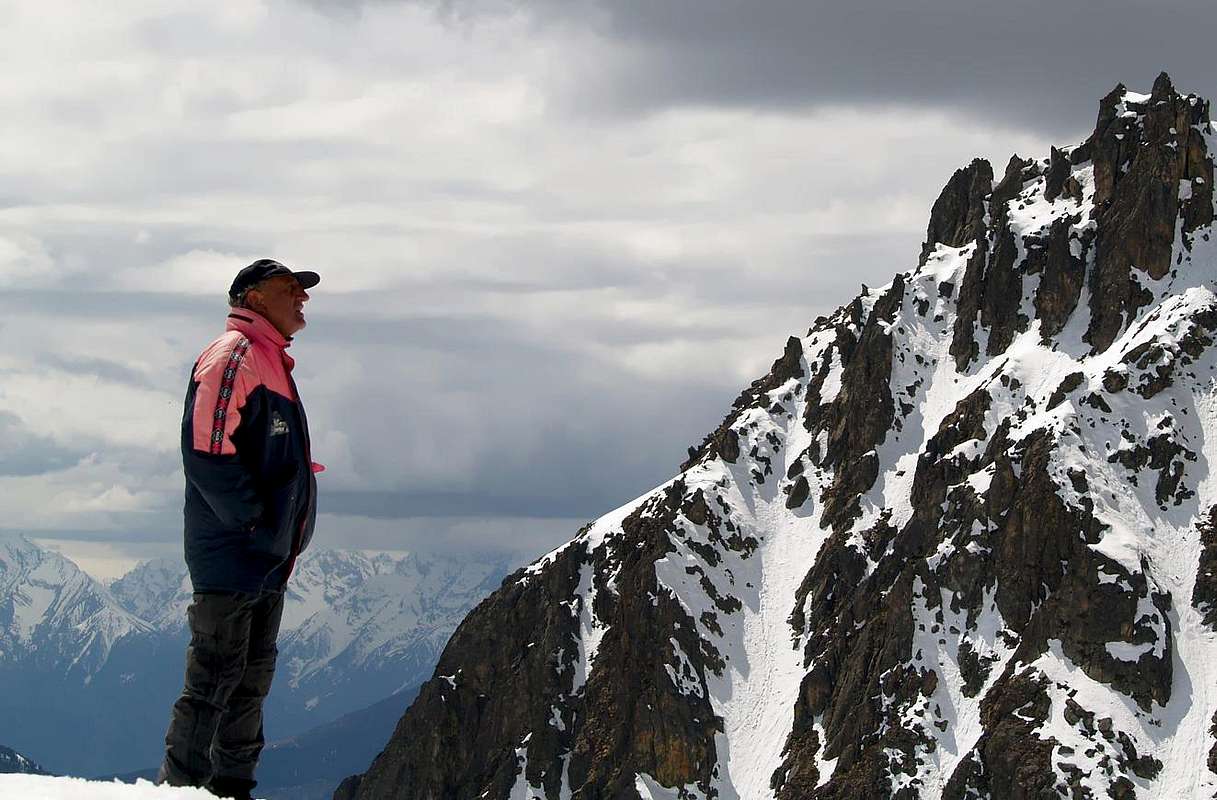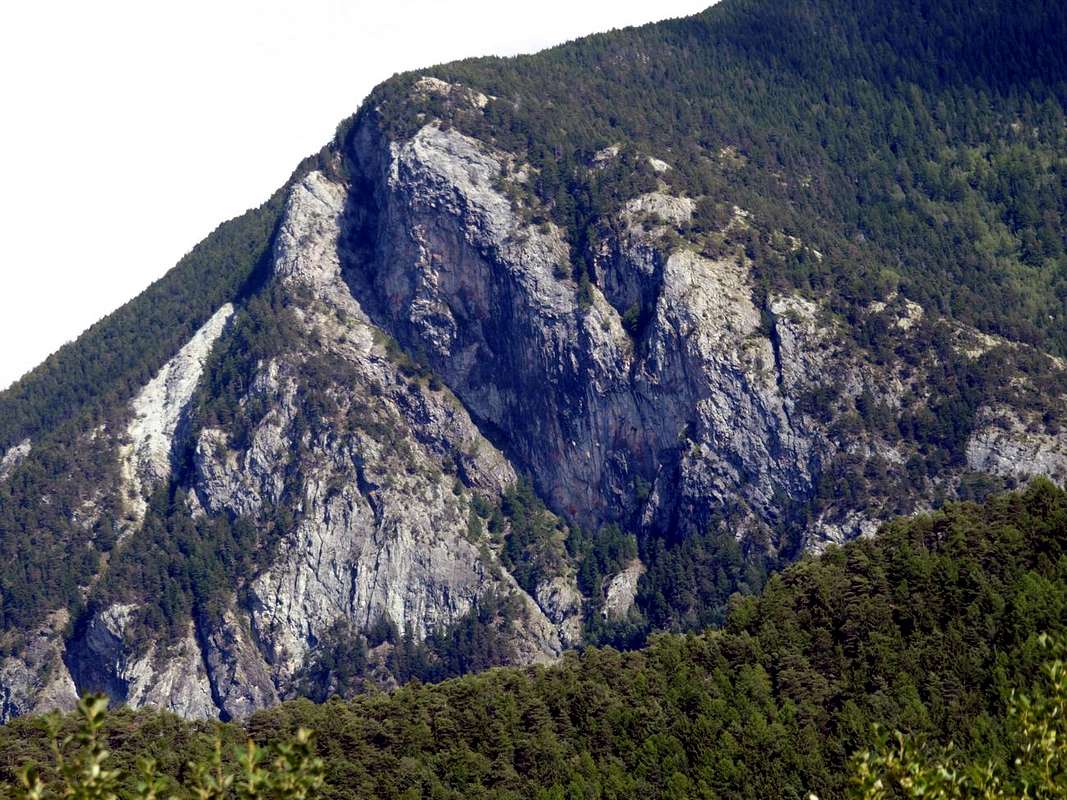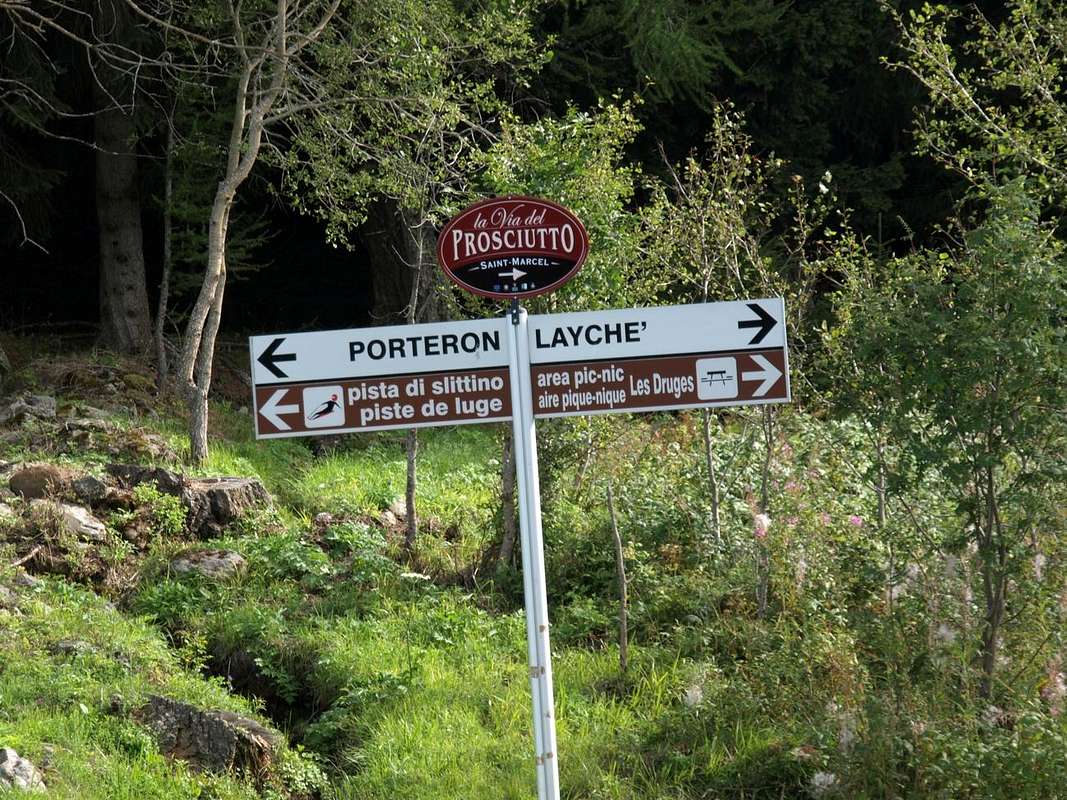-
 2010 Hits
2010 Hits
-
 80.49% Score
80.49% Score
-
 12 Votes
12 Votes
|
|
Area/Range |
|---|---|
|
|
45.71070°N / 7.48621°E |
|
|
Hiking |
|
|
Spring, Summer, Fall, Winter |
|
|
6598 ft / 2011 m |
|
|
Note
La montagna chiama i suoi figli, ed essi rispondono fedelmente al suo appello… Osvaldo Cardellina, Diario alpinistico, 1964-65 Page texts: @ OsvaldoCardellina "Osva", passed away on May 2, 2022. Page owners: Christian Cardellina e Osvaldo Cardellina. Any updates from September 12, 2022: Antonio Giani, page administrator, friend and climbing companion. Testi della pagina: @ OsvaldoCardellina "Osva", scomparso il 2 maggio 2022. Proprietari pagina: Christian Cardellina e Osvaldo Cardellina. Eventuali aggiornamenti dal 12 settembre 2022: Antonio Giani, amministratore della pagina, amico e compagno di salite. |
Overview
Getting There Road Itineraries from Fénis & by Saint Marcel
Small trips & crossings
A) - ALTERNATIVE ROUTE directly with Departure from Floor Valley by Le Perron Fraction (582m) or from the adjacent Le Pommier (614m)To the St. Julien (1.384m) from Le Coteau old Village (1.334m). It starts with the path n° 10B (wooden signpost for St. Julien) at the hairpin-junction between the villages of La Morgettaz and Le Pieiller (1.230m) after a short distance on a dirt track and soon you get to the source village "Phantom" by Le Coteau (1.234m), in the woods. Here is another similar sign, hanging from the old alp, half in ruins and in front, pointing towards the South direction, a small ramp leading to the little votive Chapel/Oratory of St. Joseph, just behind the old village, now abandoned (one renovated house) and looking ghostly, where in times not so long ago there was "Life". He turns to the East and with gentle climb you pass a brook with a flat stone, which acts as a miniscule bridge, leaving below a pasture with grass at the edge of the woods that is about to go broke, you continue progressing toward Northeast until meet the plates of polished rock and blackish (aimed at a small climbing didactics; in the area are succulents). The trail begins to rise before addressing slope towards a grassy collar, scrapping on the left, (Collar of Saint Julien? Impassable because beyond presents a vertical rock face) and then decisively in the direction of North to a long wooden boardwalk that a good fence protects against a quantum leap rock, above the Vallon of Pieiller. The next stretch leading to the wooden walkway that "cuts" the West Slope with a diagonal to the North, and very exposed an impressive leap rock, but protected by a fence that is hanging in the balance at the end because, due to the winter snow, it is off exit from its base. You have to pay a little attention, especially in the presence of childrens. After crossing the same, the trail climbs to the North-northeast, and with a beautiful stone staircase, pleasant to go, achieving a rampart with beautiful views of the Central Valley, the Dora Baltea River and the City of Aosta; while the West stands the Range Roèses (to photograph must come in the morning), preceded by the South Coast more than Mount Saint Julien salt to the nearby Torrasse (1.854m), Mount Corquet (2.527m) to eventually decline with semi-circular route to Mount Roux (2.277m), the site of ancient Ironmines and Copper. Turning to the right with a nice diagonal through the woods, on the trail soft, slightly steep and studded safe from dawn of mushrooms, you get to the Sanctuary of Saint Grat with octagonal Church its high, white and square (0h'35/0h'40). True Summit is just above and you can reach, with precaution as we have already mentioned above for the "Colletto" or Collar, in a short time with a trace of grass and trees just to the right (West) of the same. This tour allows you to cross the Pieiller Valley in half.
Per il Saint Julien (1.384 m) dal vecchio Villaggio di Le Coteau (1.334 m). S'inizia con il sentiero n° 10B (cartello segnaletico in legno per St. Julien) al tornante-bivio tra i Villaggi di La Morgettaz e Le Pieiller (1.230 m); dopo un breve tratto in strada sterrata e subito apprwesso la fonte si arriva al Villaggio "Fantasma" di Le Coteau (1.234 m), in mezz'al bosco. Qui un altro similar cartello, appeso alla Baita, per metà in rovina e di fronte, indica verso Sud la direzione; una rampetta porta alla piccola cappella votiva Oratorio di San Giuseppe, subito alle spalle del vecchio villaggio, ormai quasi del tutto abbandonato (una sola casa ristrutturata) e dall'aspetto spettrale, ove in tempi neppure troppo lontani c'era la "Vita". Volgesi ad Est e con dolce salita si oltrepassa un ruscelletto con una pietra piatta, atta a mini ponte; lasciando al di sotto un'alpeggio, che sta per andar in rovina, con prato al limitar del bosco si continua progredendo verso Nordest sino ad incontrare delle placche di roccia levigata di color nerastro (adatte ad una mini arrampicata didattica; nella zona vi sono piante grasse). Il sentiero incomincia ad aumentar di pendenza indirizzandosi dapprima verso un colletto erboso, che scarta sulla sinistra, (Colletto di Saint Julien? Non attraversabile, perché al di là presenta un'erta parete rocciosa) e poi decisamente con direzione a Nord verso una lunga passerella in legno che una buona staccionata protegge da un notevole salto roccioso, soprastante il Vallone del Pieiller. Il tratto successivo porta, perlappunto, alla passerella in legno che "taglia" il Versante Ovest con un diagonale a Settentrione, molto esposto su d'un impressionante salto roccioso, ma protetto da staccionata in bilico nella parte finale perché, causa la neve invernale, é fuoruscita dalla sua base d'appoggio. Bisogna prestar un pò d'attenzione, soprattutto in presenza di bambini. Dopo la traversata della medesima, il sentiero sale verso Nord-nordest e con una bella gradinata in pietra, piacevole da percorrersi, raggiunge uno spalto con splendida vista sulla Valle Centrale, la Dora Baltea e la Città di Aosta; mentre ad Occidente si staglia la Catena delle Roèses (per fotografare bisogna venir di mattino), preceduta più a Mezzogiorno dalla Costiera che dal Monte Saint Julien risale alla vicina Torrasse (1.854 m), al Mont Corquet (2.527 m) per infine declinare con percorso semi circolare al Mont Roux (2.227 m), antica sede di Miniere di Ferro e Rame. Voltando a destra con bel diagonale in mezzo al bosco, su sentiero morbido, poco ripido e sicuro costellato dallo spuntar di funghi, s'arriva al Santuario di Saint Grat con la sua Chiesa alta, bianca, ottagonale e squadrata (0h'35/0h'40). La Cima é appena sopra e la si può raggiunger, con precauzione per quanto già osservato in precedenza a proposito del Colletto, in breve su traccia su erba ed alberi subito a destra (Ovest) della stessa. La gita permette d'attraversare a metà il Vallone del Pieiller.
C) - La Torrasse o Mont La Tourriasse (1.985 m) da Les Druges Alte passando dal Vallone del Pieiller Alla Torrasse o Touriasse attraverso la strada sterrata concomitante con il sentiero n° 14. Che parte subito dietro il fontanile del "Rascard" squadrato nonchè appresso alla Cappellina di San Bernardo. Da questa località verso l'isolata Alpe di Fontanafredda (1.829 m). Da Fontaine Froide sussistono tre possibilità:
Important Information
- REGIONE AUTONOMA VALLE D'AOSTA the official site.
- FONDAZIONE MONTAGNA SICURA Villa Cameron, località Villard de la Palud n° 1 Courmayeur (AO) Tel: 39 0165 897602 - Fax: 39 0165 897647.
- SOCIETA' DELLE GUIDE DELLA VALPELLINE Etroubles-Strada Nazionale, n° 13 - Tel +39 0165 78559 - Valpelline-Loc Capoluogo, n° 1 - Tel +39 0165 713502 (AO) Italia.
- A.I.NE.VA. (Associazione Interregionale Neve e Valanghe).
Useful numbers
- Protezione Civile Valdostana località Aeroporto n° 7/A Saint Christophe (Ao) Tel. 0165-238222.
- Bollettino Meteo (weather info) Tel. 0165-44113.
- Unità Operativa di Soccorso Sanitario Tel. 118.




























